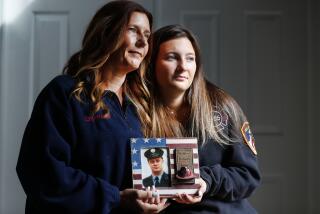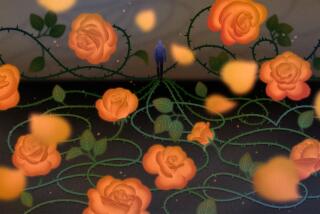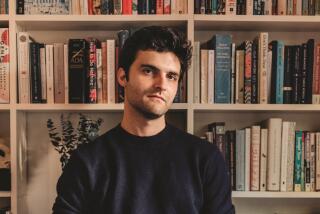One Moment in Time That Echoes for Years
Her question, with the irrational hope that it implied, is something I will never forget.
“Did you see him?” my mother-in-law asked quietly, in our first phone conversation since she’d been told hours before that her son had died. “Did you actually see the body? There could have been a mistake, you know.”
No, I hadn’t seen the body. But I had talked to friends who’d seen him gasping for air; to the policeman who had accompanied him to the hospital; to the emergency room nurse who had tried to shock his heart back to life and failed.
I did not need to see a body to accept the fact that my husband was dead. But his mother, 3,000 miles away in Ohio, would not let him go until she had.
That night, eight years ago, keeps replaying these days in my head, as I read the haunting accounts of families with loved ones still missing in the World Trade Center collapse.
Nine thousand mourners gathered for a service at the site last Sunday. Their prayers, songs and shared condolences provided an emotional balm for many. But countless others stayed away, not ready yet to confront the mangled, smoldering, impenetrable ruins that represent their loved one’s fates.
The search is little more now than a cleanup operation. There is no chance, almost two months after those buildings fell, that anyone else will be pulled out alive. Yet, hundreds of families refuse to accept the inevitable, still hold out for a miracle.
Maybe their mother is lying in a hospital--injured, unconscious, unidentified. Maybe their son staggered out of the building alive, knocked by trauma into amnesia. Maybe, since no one saw the bodies, there’s an undiscovered air pocket inside, where survivors are struggling to stay alive.
For some, holding on to a shred of hope--even when it defies logic and strains convention--can be a healthy coping mechanism, a way of moving from one stage to another in the unending journey through grief.
“For the first week, the first month, you can pretend like they’re still here, just absent,” explained Agnes Huff, a West Los Angeles crisis counselor who specializes in aviation disasters. “That’s very normal when you go through a significant loss like this, especially something so sudden and tragic.”
Even in less public tragedies, it takes time to grasp the enormity of an event as unfathomable as sudden death.
For months after my husband died, my 5-year-old clung stubbornly to this explanation for his absence: Daddy must be off on a business trip . I hadn’t let my children see his body in the casket; I wanted their last memories to be of him vibrant and alive.
So she came slowly to the realization that her father was, as she finally came to call it, “permanently dead.”
“I remember you kept saying that he had died,” she told me years later. “But I didn’t know that meant he was never coming back.”
Even grown-ups can succumb to what we, from an emotional distance, might consider wishful thinking. Counselors in New York City still report encounters with people who refuse to believe their missing are dead; who refuse to apply for death certificates or insurance benefits, considering that tantamount to disloyalty.
“Most of these families will not have anything returned to them, nothing to bring them face-to-face with death, nothing to remember their loved ones by ... not a shred of clothing, a piece of jewelry, a body part,” Huff said. “It makes a proper funeral or memorial service difficult, and it complicates the recovery process.”
New York City officials are trying to fill that void by handing out boxes filled with ash and soil from the World Trade Center wreckage. Dozens of families lined up last Sunday to collect those wooden urns.
For some, it might be the symbol they need to ease their passage back to life, post-death. For others, the gesture is rendered puny by their disconsolate anger and grief.
“I think it can provide some comfort,” Huff said, “because it is something tangible that you can attach your feelings to. But what’s best for each family is going to be different.
“Some will want to keep it at the center of their lives. Others will want it in the shadows, but available to them when they need it. And for some, it may take years to figure out its meaning ... to know what to hold on to and what to let go.”For most of the World Trade Center families, that box of generic ashes swept from the wreckage is all they’ll have of their loved one’s remains. And that crumpled mass of concrete and steel is the closest thing they’ll have to a grave.
But over the years, as their pain recedes, new images will emerge to connect them to the dead, in a way that ashes and tombstones never could have.
In our family, the ashes have no transcendent meaning. We never buried them, put them on display or sprinkled them at sea. They sit hidden, on a shelf at the back of a cabinet in a corner of our family room. It may seem odd, dishonorable even, to some, but somehow it feels right to us.
His is a presence we scarcely acknowledge, yet we sense his shadow in our lives. By necessity, we have moved on without him. Yet every now and then we encounter reminders that death cannot kill our memories, cannot obliterate the past. Our emotional ties hold fast.
Last week, as I have every year, I dug through our box of Halloween costumes for the one accessory I’m required to wear. Beneath the witches and black cats and ballerinas lies a tattered, dirty, striped tiger-eye mask.
We don’t know where or why he got it, but as far back as my kids can remember, their dad had donned the eye mask as his costume when he led us trick-or-treating.
And this year--although the world has changed and my children have almost outgrown this holiday--sometime between the ritual carving of pumpkins and the traditional trek next door for a family photo, I pull that mask down over my eyes and parade through the house, like their father, the tiger.
It has taken me years to understand that we accommodate life and death in much the same manner--summoning up all the energy and courage we can to move forward, and reaching back to our memories for the strength and solace that ritual brings.
Back in Ohio, my mother-in-law still grieves her son. She retreats to her room to mourn when she sees his photograph. She cries at the mention of his name. Only the sight of her granddaughters cheers her, because they embody the child she lost.
In our house, his spirit makes our daughters smile, as they remember their dad in a tiger mask, celebrating life with the family he loved.
*
Sandy Banks’ column runs on Sundays and Tuesdays. She can be reached at https://[email protected].
More to Read
Sign up for Essential California
The most important California stories and recommendations in your inbox every morning.
You may occasionally receive promotional content from the Los Angeles Times.










